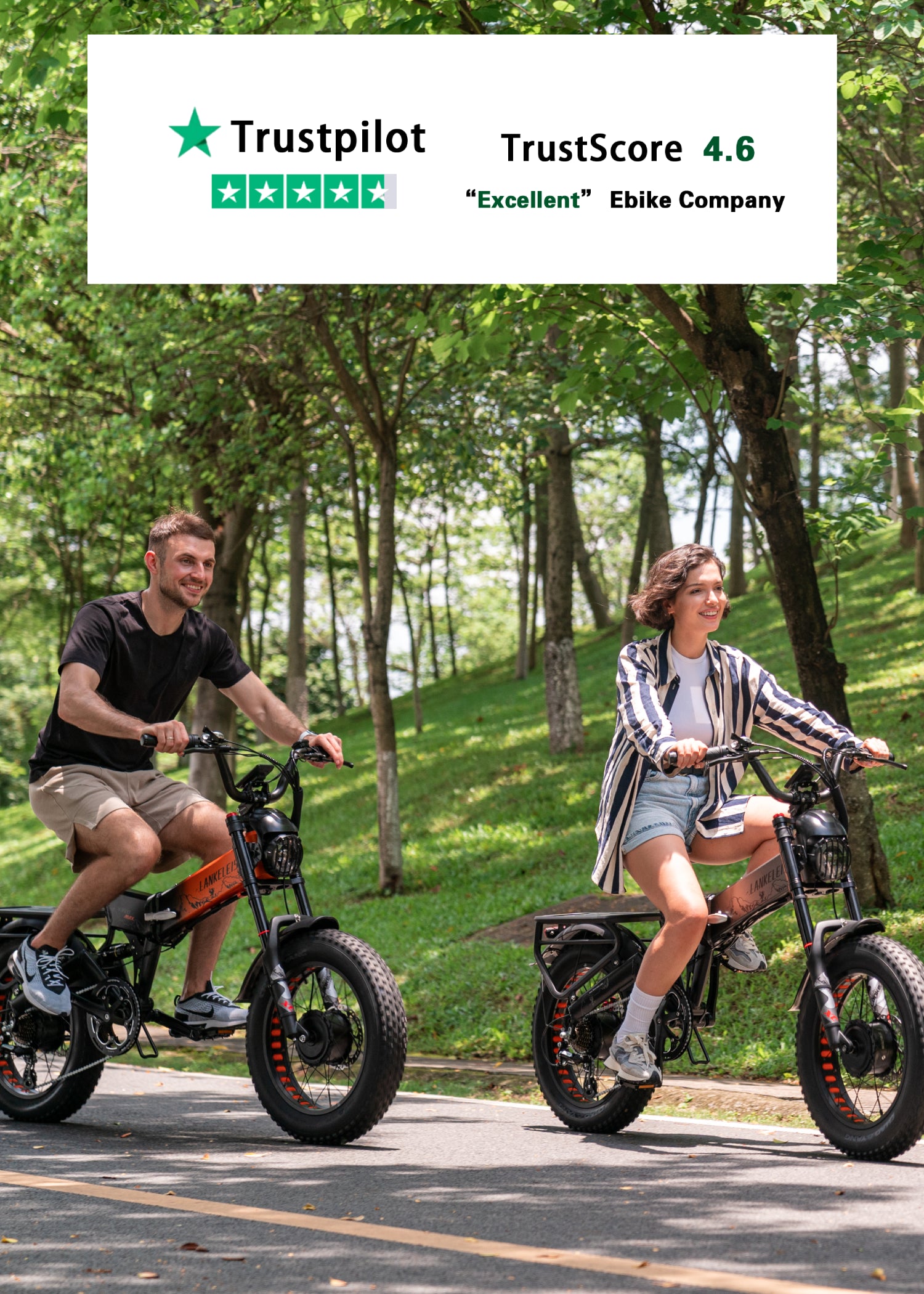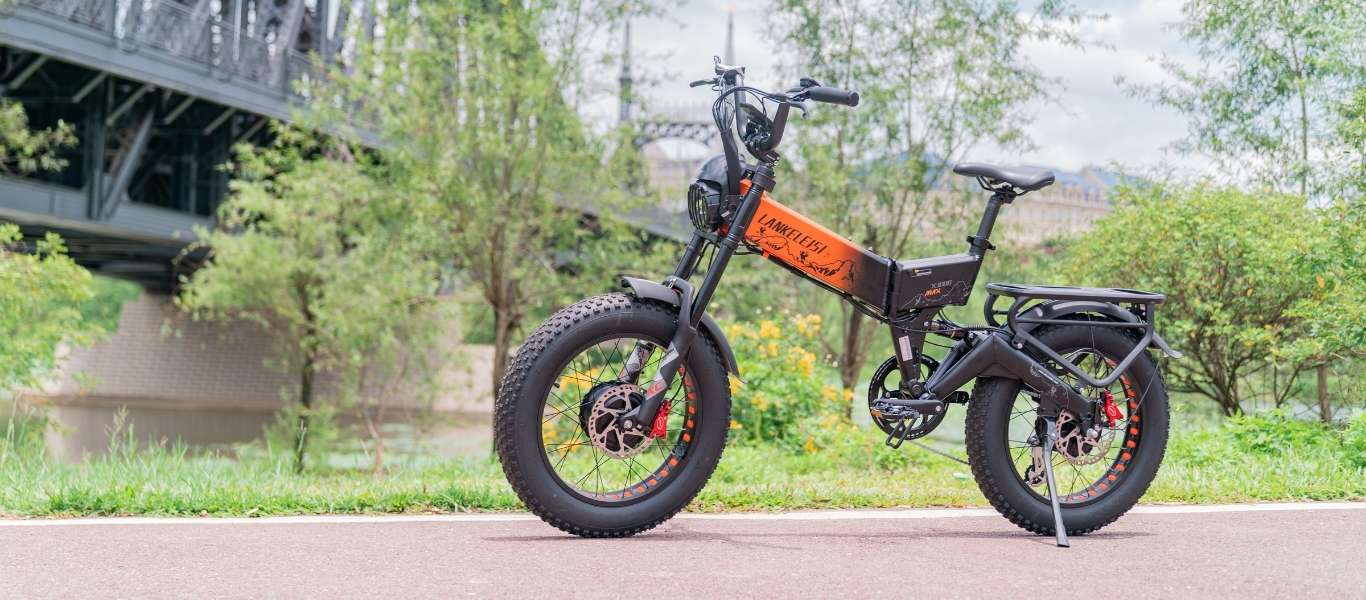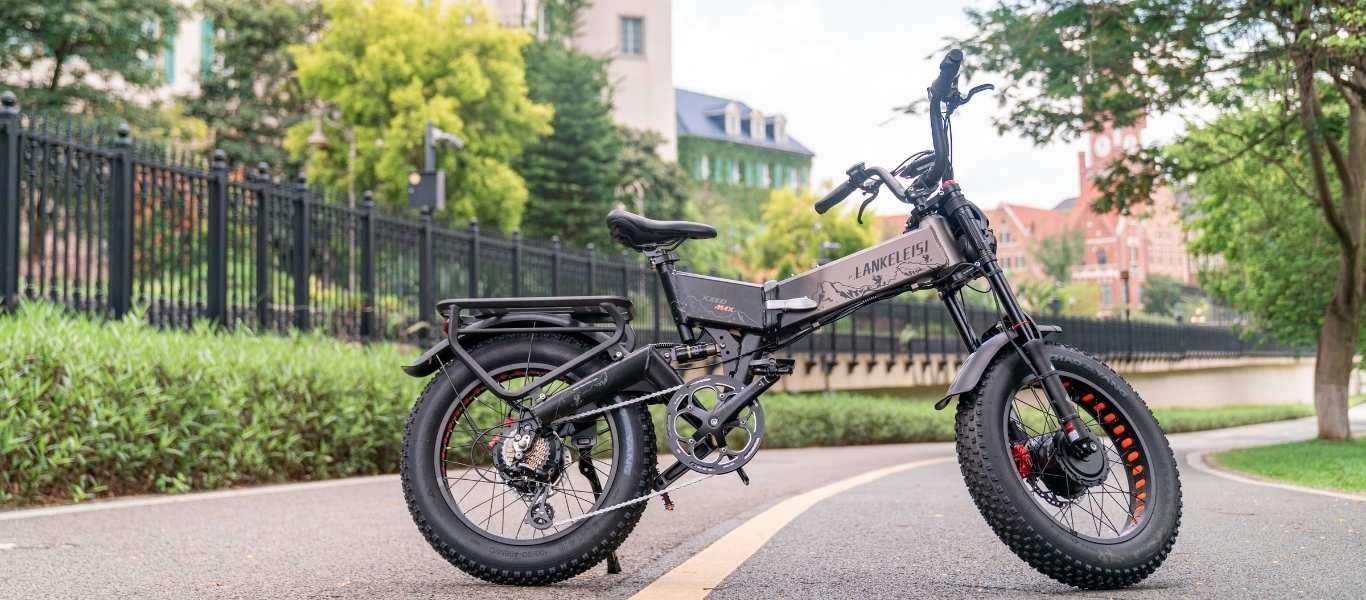Vous voulez savoir quelle est la vitesse maximale d'un vélo électrique ? Tous les modèles roulent-ils à la même vitesse ?
Grâce à la montée rapide des vélos électriques pour les trajets quotidiens, les loisirs, et même les aventures tout-terrain, de plus en plus de cyclistes souhaitent connaître leurs véritables capacités de vitesse. Cependant, il est important de noter que la vitesse d'un vélo électrique n'est pas uniquement déterminée par son moteur. Les réglementations, le terrain, le poids du cycliste, le type de vélo, et les paramètres techniques jouent également un rôle crucial.
Dans cet article, nous explorerons en détail les points suivants :
- Vitesses légales pour différentes catégories de vélos électriques,
- Facteurs qui affectent la vitesse maximale,
- Comment choisir la bonne vitesse pour vos besoins et votre sécurité.
Comprendre la vitesse des vélos électriques
La vitesse d'un vélo électrique est la vitesse à laquelle le moteur cesse d'assister le pédalage. En d'autres termes, si vous pédalez fort ou descendez une pente, vous pouvez rouler plus vite, mais au-delà d'un certain seuil défini, le moteur du vélo électrique ne vous assistera plus.
Par conséquent, deux types de vitesse sont distingués :
- Vitesse assistée : Vitesse maximale avec l'assistance du moteur
- Vitesse réelle : Vitesse que vous pouvez atteindre avec assistance + votre effort, ou en descente.
Classification et limites de vitesse légales pour les vélos électriques en Europe
Lors de l'achat ou de l'utilisation d'un vélo électrique, la vitesse maximale dépend non seulement de la puissance du moteur mais, surtout, des lois et réglementations locales. Pour éviter les mauvaises surprises (amendes, interdictions, annulation d'assurance), il est essentiel de connaître la catégorie VAE et ses limites légales.
L'UE n'utilise pas le même système « Niveau 1, 2, 3 » que les États-Unis. Mais elle définit clairement les catégories en fonction de la puissance et de la vitesse d'assistance :
Cycles électriques assistés standard
- La vitesse maximale d'assistance est de 25 km/h.
- La puissance continue nominale du moteur du vélo électrique est limitée à 250W.
- L'assistance s'arrête dès que le cycliste cesse de pédaler ou que la vitesse dépasse 25 km/h.
- Aucune inscription, assurance ou licence requise.
- Il est recommandé que les adultes portent un casque.
Cette catégorie représente la majorité des vélos électriques vendus en Europe, notamment pour les déplacements urbains et les trajets quotidiens.
Vélo électrique haute vitesse
- Vitesse maximale assistée jusqu'à 45 km/h.
- Puissance du moteur supérieure à 250 W.
- Dans la plupart des pays de l'UE, il est classé comme un cyclomoteur.
- Inscription requise.
- Assurance requise.
- Habituellement, une licence AM ou équivalente est requise.
- Un casque de cyclomoteur homologué est obligatoire.
De tels vélos sont interdits sur les pistes cyclables dans plusieurs pays européens, y compris la France, sauf pour des dérogations locales.
Pourquoi ces règles sont-elles importantes ?
- Il maintient les routes sûres, en particulier pour les piétons et les autres cyclistes.
- Il évite la confusion entre les bicyclettes, les cyclomoteurs et les trottinettes électriques.
Quels facteurs influencent la vitesse maximale d'un vélo électrique ?
Que vous ayez roulé sur une piste cyclable urbaine européenne ou un sentier forestier, vous avez probablement remarqué que la vitesse réelle d'un vélo électrique, même si elle est un peu lente, dépend de divers facteurs mécaniques, techniques et environnementaux. Voici quelques-uns des facteurs qui influencent la vitesse maximale d'un vélo électrique :
1. Puissance du moteur
La norme européenne EPAC (Cycles à Assistance Électrique) limite la puissance du moteur à 250W pour les routes publiques. Sur le marché, vous pouvez trouver des modèles avec des puissances moteur de 500W, 1000W, 2000W, et même plus élevées. Une puissance moteur plus grande permet une accélération plus fluide et une meilleure capacité à maintenir la vitesse en montée ou contre le vent.
Par exemple, bien que LANKELEISI propose des vélos électriques avec différents niveaux de puissance, la plupart de ses modèles peuvent être contrôlés via le tableau de bord. Et il répond à la certification CE.
2. Tension et capacité de la batterie
Les batteries 36V sont courantes pour les vélos électriques de ville. Les batteries 48V ou 52V fournissent plus de puissance et sont donc mieux capables d'atteindre et de maintenir des vitesses élevées, surtout en montée.
3. Poids du cycliste et charge
Un cycliste de 60 kg aura une vitesse et une autonomie différentes de celles d'un cycliste de 100 kg sur le même vélo. Le poids total (cycliste + sacoches, remorque, etc.) affecte l'efficacité de l'assistance, en particulier dans les côtes.
4. Type de terrain et conditions extérieures
Routes plates et lisses = meilleure vitesse moyenne. Terrain irrégulier, boueux, sablonneux = plus de puissance moteur, vitesse réduite. Les vents de face, les pentes et même la température ambiante peuvent affecter les performances du moteur.
5. Pneus, pression et type
Des pneus plus larges offrent plus de stabilité mais à une vitesse réduite. Des pneus plus fins et une pression plus élevée = moins de résistance au roulement et donc plus de vitesse. Une pression incorrecte peut entraîner une perte de plusieurs km/h.
6. Effort de pédalage et transmission
Pour les vélos électriques à assistance au pédalage, plus vous pédalez fort, plus vous allez vite. Un bon système de vitesses peut vous aider à adapter votre effort aux conditions, surtout en montée.
Précautions de sécurité lors de la conduite à grande vitesse
Rouler plus vite à vélo électrique est excitant, mais cela s'accompagne aussi de responsabilités. Voici les points clés à ne pas négliger pour une conduite sûre à grande vitesse :
Casques et équipements de protection
Dans l'UE, le port du casque est obligatoire pour les vélos électriques jusqu'à 45 km/h. Même pour les modèles avec une limite de vitesse de 25 km/h, le port d'un casque homologué est fortement recommandé, surtout dans les zones urbaines densément peuplées.
Distance de freinage accrue
Plus la vitesse est élevée, plus la distance nécessaire pour s'arrêter est longue. Un vélo électrique à 25 km/h met environ 3 fois plus de temps à s'arrêter qu'un vélo conventionnel à 15 km/h. Assurez-vous que votre vélo électrique est équipé de freins à disque puissants, surtout lorsque vous roulez par temps de pluie ou en pente.
Visibilité et Anticipation
À grande vitesse, les conducteurs peuvent vous prendre pour un cycliste ordinaire, ce qui augmente votre risque d'accident. Pour augmenter votre visibilité :
- Portez des vêtements réfléchissants.
- Installez des phares puissants à l'avant et à l'arrière.
- Utilisez les rétroviseurs pour surveiller la circulation derrière vous.
Cadres et suspension modifiés
Les vélos électriques pouvant dépasser 25 km/h doivent être conçus pour supporter des vitesses élevées : cadres renforcés, fourches suspendues et pneus anti-crevaison. Ne modifiez jamais un vélo électrique économique pour augmenter sa vitesse, car cela peut compromettre votre sécurité.
La vitesse maximale dépend du type de vélo électrique
Tous les vélos électriques ne sont pas conçus pour rouler à la même vitesse. Le type de vélo, sa configuration technique et son usage prévu ont un impact direct sur ses performances sur route ou hors route. Voici un aperçu clair des vitesses maximales courantes selon le type de vélo électrique, tout en respectant les réglementations de l'UE.
Vélo électrique de ville
- Vitesse maximale assistée : 25 km/h
- Convient pour : déplacements quotidiens, trajets à vélo, pistes cyclables
- Caractéristiques : position confortable et droite, moteur 250W
Vélo pliant électrique
- Vitesse maximale assistée : 25 km/h
- Idéal pour : courts trajets multimodaux (train + vélo)
- Caractéristiques : compact, léger, facile à ranger
Vélo électrique de montagne
- Vitesse maximale assistée : 45 km/h
- Idéal pour : sentiers, randonnée, terrain technique
- Caractéristiques : moteur coupleux, suspension intégrale, pneus larges
Vélo électrique à pneus larges
- Vitesse maximale assistée : 45 km/h
- Idéal pour : neige, sable, sentiers forestiers
- Caractéristiques : haute stabilité, moteur puissant, pneus surdimensionnés
Conclusion
Les vélos électriques sont une combinaison parfaite de vitesse, de commodité et de protection de l'environnement, mais la clé pour choisir le bon modèle est de comprendre la vitesse dont vous avez besoin et les restrictions réglementaires dans votre région. Que vous recherchiez un vélo de ville fiable ou un modèle puissant à haute performance, LANKELEISI vous offre un large choix de performances, de sécurité et de style.
Visitez le site officiel de LANKELEISI dès maintenant pour choisir un vélo électrique qui correspond à votre style de vie.











